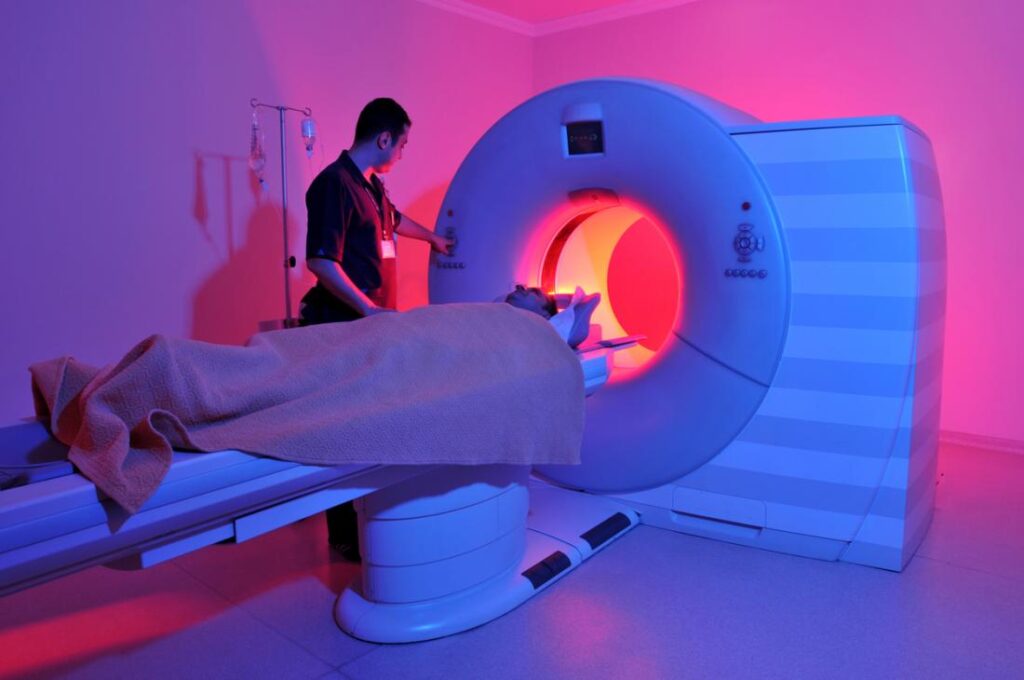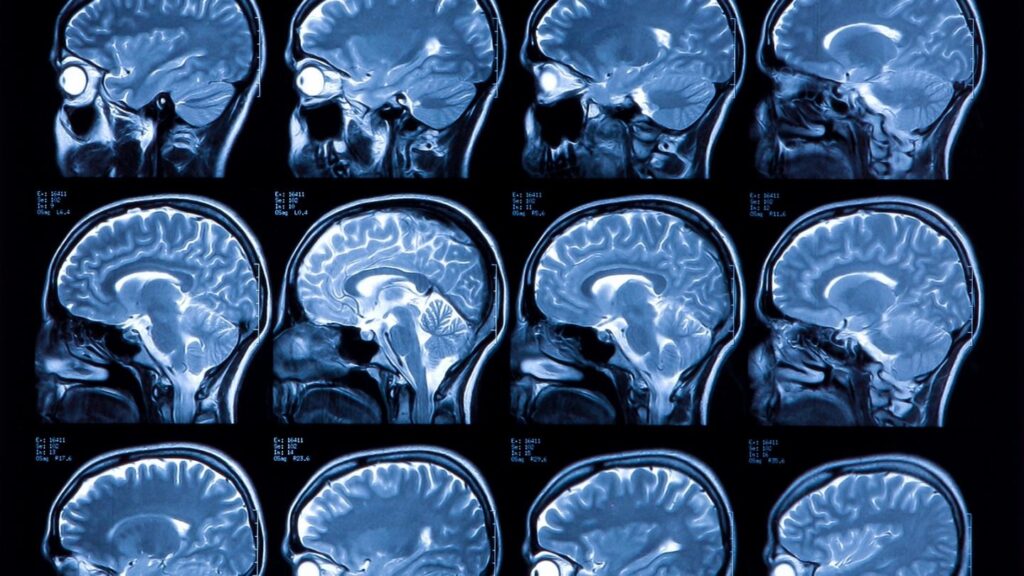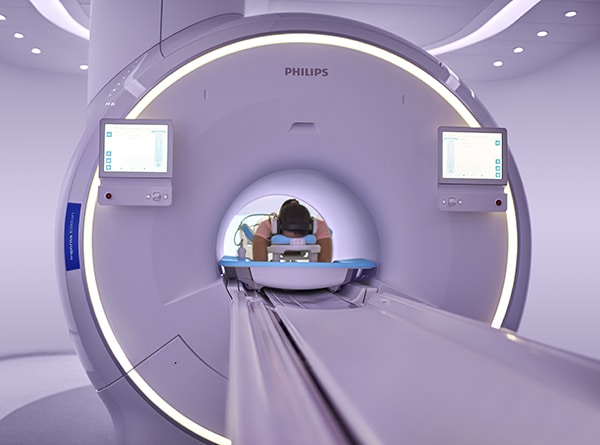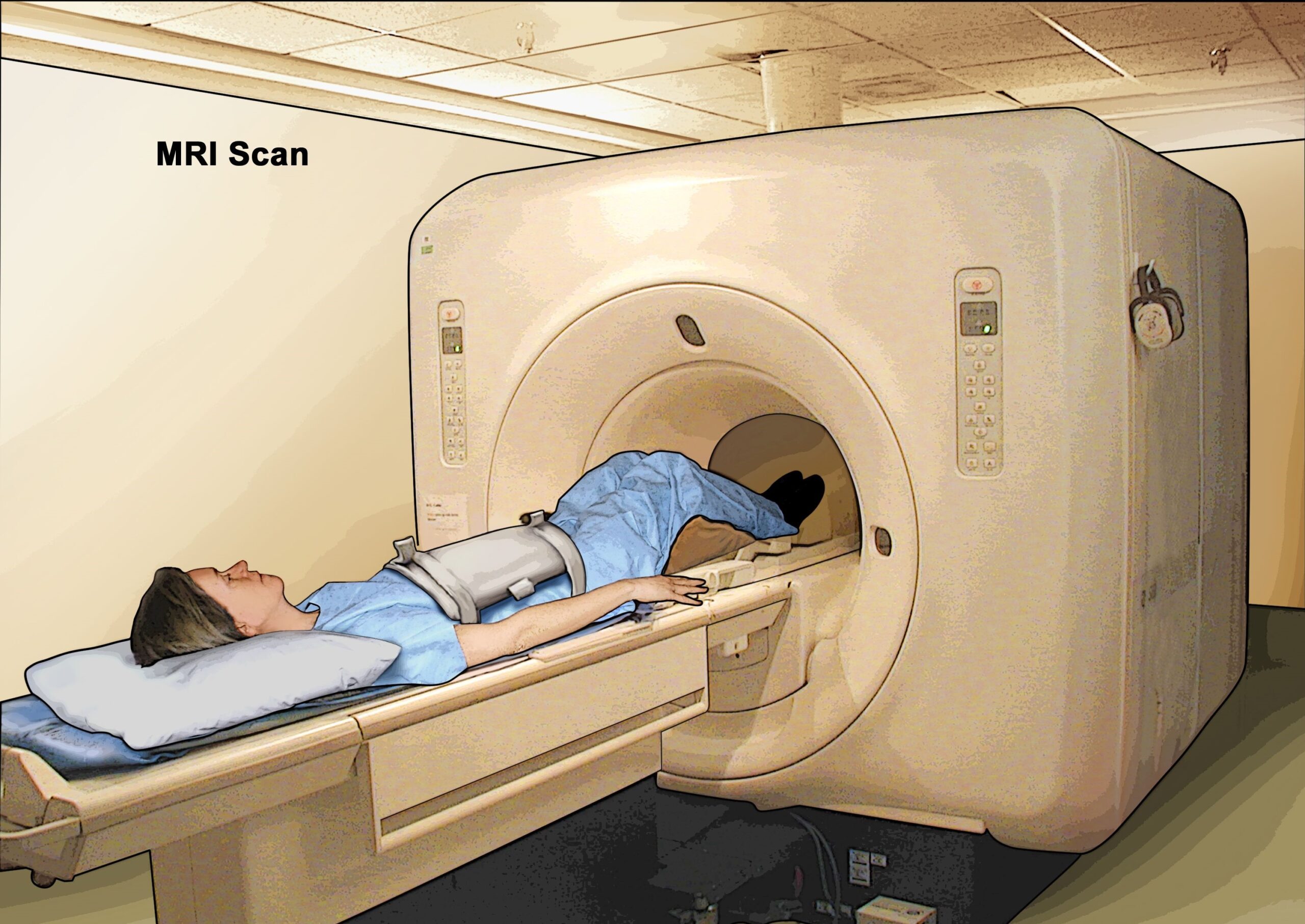Magnetic resonance imaging (MRI) is an imaging test that uses powerful magnetic forces, radio waves and a computer to produce detailed 3-dimensional images of organs, bones and soft tissues inside the body. inside your body. Some MRI exams require a contrast agent to provide clearer images. Any ionizing radiation is not used in MRI.
It is important to tell the MRI team if you have metal in your body. The magnetic force is so strong that it can damage or move some devices.
An MRI cannot be used if you have:
- an implant such as a cochlear implant (in the ear);
- certain types of clamps used for brain aneurysms;
- certain types of coils installed in blood vessels;
- almost any type of defibrillator or pacemaker.
In most cases, MRI can be done even if you have a prosthetic joint, artificial heart valve, implantable drug delivery port, implantable neurostimulator, or metal rods, screws, plates, stents, or clips. Dental fillings and orthodontic appliances are often unaffected by the magnetic field, but could distort images of the face or brain.
MRI is a noisy examination during which you can hear loud knocking or metallic noises. MRI is a painless examination.
Why we do an MRI exam
- An MRI scan may be done to:
- Examine different parts of the body and determine whether you have certain diseases;
- Diagnose cancer and determine its stage (how far the cancer has spread).
- Help plan treatment.

How is an MRI exam done?
The MRI exam is usually done in the hospital or at a specialist MRI center on an outpatient basis. The exam usually takes 30 to 50 minutes, but it can take up to 2 hours depending on the area to be examined. If general anesthesia is required, the examination may take longer.
You should wear comfortable clothes without metal snaps or zippers. They may need you to put on a hospital gown depending on the part of the body to be examined. You will be asked to remove any metal jewelry and any other object with a magnetic stripe, such as a bank card or credit card, from your pockets. These objects can interfere with the MRI scan. You may also be asked to remove some of your clothing.
Unless instructed otherwise, you can eat, drink, and take medicine as you usually do.
Tell your doctor if you suffer from anxiety or fear of enclosed spaces, which is called claustrophobia. Some people may need a sedative to relax and stay still during the entire exam. Others might need general anesthesia. Both taking a sedative and general anesthesia will affect what you can eat or drink before the test.
If contrast material is used or you need general anesthesia, they will be given to you intravenously in your hand or arm. The most widely used contrast product is gadolinium.
You are usually alone in the exam room, but many centers allow another person to stay with you after the metal checks are done. The technologist is at the computer, in another room. You can see the technologist at all times and speak with him through an intercom.

What to do during MRI
During the MRI examination:
- You lie on a movable examination table. Straps and cushions may be used to help you stay in the correct position and stay still during the exam. For an MRI of the head, a device is placed around the head to hold it in place. Devices containing coils may be placed around or near the area to be examined. These coils improve the quality of the image of the regions examined such as the neck, the shoulder, the knee and the breast.
- The table slides into a narrow cylinder that houses the MRI machine with scanning magnet. The interior of the device is well lit and a fan gently pushes cool air. The part of your body that will be examined is positioned in the center of the cylinder. The surface of the cylinder may be only a few inches from your face.
- You may be offered earplugs or headphones so you can listen to music during the MRI scan.
- You must remain still in the MRI machine when it takes the images. An MRI scan is usually done by taking multiple sequences of images. Some sequences last several minutes.
- You may be asked to hold your breath at times to help the pictures come out clearer.
Side effects
MRI doesn’t use radiation and there are not any known harmful effects.
Some people may have a slight reaction to the contrast medium and may experience the following symptoms, among others:
- Nausea
- Dizziness
- Headache
- Metallic taste
- Pain where the needle was inserted
Discuss with your doctor the side effects of sedation or general anesthesia before the MRI scan.
What the results mean
An MRI scan may reveal:
- a change within the shape, size or structure of tissues and organs;
- a mass that could be a tumor (MRI cannot always differentiate a cancerous tumor from a non-cancerous one);
- the approximate shape, size and location of a tumor;
- the spread of cancer within the body (metastasis);
- whether the size of the tumor has decreased, stayed the same or increased after treatment.
What happens if the result is abnormal
Depending on the results, your doctor will decide if further examinations, treatments or follow-up are necessary.

Special considerations for children
Preparing a child for a test or procedure can reduce anxiety, increase cooperation, and help develop coping skills. Preparation involves explaining to the child what will happen during the test, including what he will see, feel, hear, taste or smell.
We can explain that the MRI machine is a big camera that looks like a tunnel. Reassure your child by telling him that the device is noisy, but that it does not hurt. Children can bring their favorite music to listen to during the exam or they can bring a stuffed animal or a blanket in the device if it does not have metal parts.
The child must remain still on the table during the MRI examination. Velcro straps may be used to help keep your child still and in the correct position. Young children are usually given a general anesthetic to keep them still during the MRI.
If a sedative or general anesthetic is used, the child may not be allowed to eat or drink several hours before the test. We will give him an IV in case of general anesthesia or if we use a contrast medium.
You can ask to be present in the room with your child if you think it would be useful.
Preparing a child for MRI depends on their age and experience. Learn more about how to help your child cope with testing and treatment.





